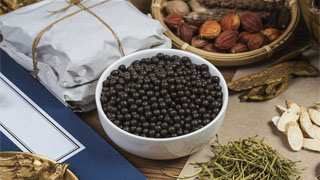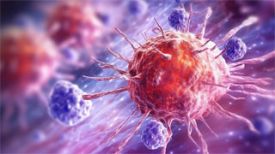
Traditional Chinese medicine believes that dampness and heat are endogenous, while rheumatic external pathogens take advantage of deficiency and invade the skin, flesh, muscles, and bones. Over time, they can transform blood stasis and produce phlegm. Phlegm stasis obstructs the meridians, resulting in gout.
The traditional Chinese medicine syndromes of gout often include damp heat obstruction, wind cold dampness obstruction, etc. Among them, damp heat obstruction is the most common clinical syndrome.
The corresponding treatment method is to clear heat and promote dampness.
As a holy prescription for damp heat pain, Danggui Niantong Tang has been applied by many doctors to treat various stages of gout and has achieved good therapeutic effects.
During the acute phase of gout, whether it is accumulation of damp heat or injection of damp heat, it can be treated with Danggui Niantong Tang.
The book states that this formula has the effects of dispersing wind evil, clearing heat and promoting dampness, and is at the center of the pathogenesis of damp heat accumulation type gout.
When it comes to its formula, there are 9g of Fangfeng, 15g of Qianghuo, 3g of Cimicifuga, 6g of Pueraria lobata, 9g of Atractylodes macrocephala, 3g of Atractylodes macrocephala, 6g of Sophora flavescens, 6g of Ginseng, 9g of Angelica sinensis, 3g of Scutellaria baicalensis, 9g of Zhimu, 9g of Zhuling, 9g of Zexie, 15g of Yinchen, and 15g of Licorice. The dosage is for reference only.
In the Inner Canon, there is a saying that "dampness and excess are caused by internal factors, and bitter heat is used to treat it". Bitter dampness can dry dampness, so Qiang Huo, which is bitter and warm, and Yin Chen, which is bitter and slightly cold, are used as medicinal herbs.
Reuse two medicines, using Qianghuo to dispel wind, dry dampness, and relieve joint pain. Yin Chen has the effects of clearing heat, promoting dampness, and promoting joint function.
Traditional Chinese Medicine says, "Treating dampness is not good for urination, it is not its treatment." Therefore, traditional Chinese medicine such as Poria cocos and Zexie, which are light and diuretic, are used to guide dampness from urination;
Using traditional Chinese medicines such as Scutellaria baicalensis, Sophora flavescens, and Anemarrhena to clear heat and dry dampness, to assist in clearing dampness and heat;
Using Fangfeng, Cima, and Pueraria lobata can not only dispel wind and relieve dampness with wind energy, but also restore the spleen and stomach's functions of clearing up turbidity and reducing dampness, assisting Qianghuo and Fangfeng in penetrating the skin's rheumatism.
The prescription is supplemented with two classic medicines, Atractylodes macrocephala and Atractylodes macrocephala, to invigorate the spleen and dry dampness, enabling the circulation of dampness and evil, and also preventing damage to the spleen and stomach caused by bitter cold drugs.
In addition, ginseng and Angelica sinensis can tonify qi and nourish blood, support the body to dispel evil, and avoid damage to the body's qi and blood caused by drugs that promote dampness and dryness.
Finally, licorice is used as a medicinal herb to blend various herbs, and combined with herbs such as ginseng, polyporus, and Atractylodes macrocephala to nourish qi and invigorate the spleen.
Throughout the entire formula, it has the effects of promoting dampness and clearing heat, dispelling wind and dispelling evil, and can separate and eliminate the evil of dampness and heat inside and outside.
Divergent rheumatism is combined with clearing heat and promoting dampness, treating both exterior and interior, and balancing evil and righteousness.
It can be used for regulating diseases such as rheumatic heat obstruction type gout, athlete's foot, and bedside, which are characterized by heavy dampness, mild heat, and wind invasion.
If the gout joint is in the upper limb, turmeric, cinnamon twig, etc. can be added;
If the gout joint is in the lower limbs, it can be treated with Herba Siegesbeckiae, Radix Achyranthis, and Rhizoma Bixie;
For those with joint pain throughout the body, seaweed bark, Weilingxian, red peony, etc. can be added;
If the affected joint is in the knee joint and the foot joint is swollen and painful, ginseng and licorice can be removed, along with papaya, Hanfangji, Huangbai, etc;
If there is local redness, swelling, heat and pain in the joints, add honeysuckle vine, green wind vine, red skin, purple grass, etc.
The modern pharmacological effects of Danggui Niantong Tang, whether as a whole or as a single medicine, are mainly reflected in three aspects:
One is anti-inflammatory and analgesic, the second is to promote the excretion of urate in the body, and the third is immune regulation.
These are also the three major treatment principles for gout both domestically and internationally.
Combining traditional Chinese and Western medicine understanding of gout, Danggui Niantong Tang can play a crucial role in the treatment of gout.
Not only can it reduce the adverse reactions and toxic side effects of Western medicine, but also based on the principle of "treating symptoms when urgent and treating the root cause when slow" in traditional Chinese medicine, it can reduce the frequency of gout attacks and improve the quality of life of patients.
Therefore, in clinical practice, regardless of which natural course gout is in, Danggui Niantong Tang can be used to treat the pathogenesis of dampness and heat accumulation in the middle.
The content of the article is for clinical reference only. Non professionals in traditional Chinese medicine are not allowed to try medication.


